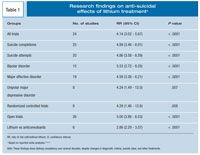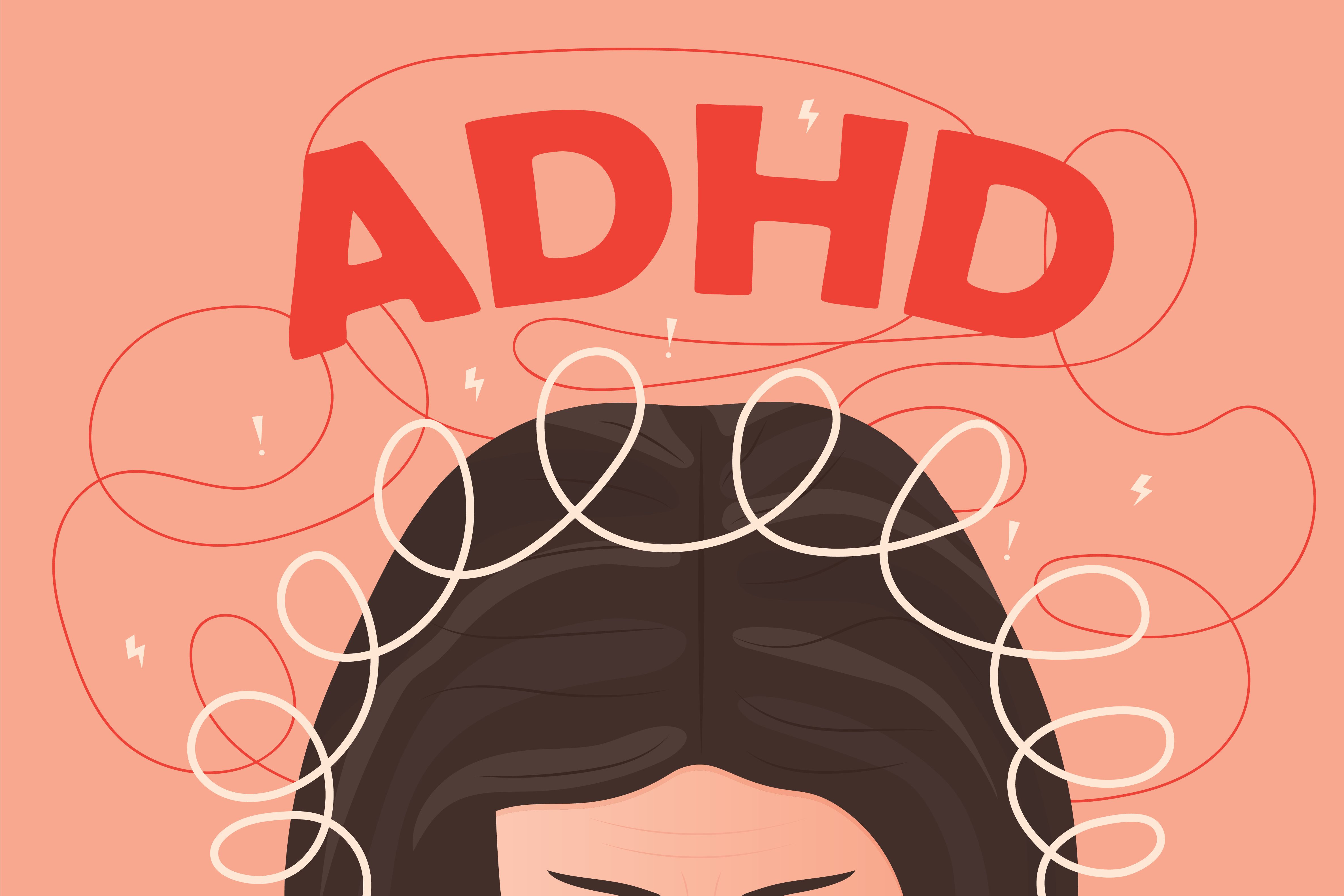Publication
Article
Psychiatric Times
Can Suicide Be Prevented?
Major mood disorders have been associated with increased suicidal behavior. This is especially true in patients with a mixed, manic-depressive, or dysphoric-agitated state.

Suicide-completed and attempted-represents a major clinical and public health challenge. The CDC has ranked suicide as the 11th leading cause of death among persons over age 10 (33,289 suicide deaths were reported in the United States in 2009, and this rate has been stable for many years).1
Suicide rates have been consistently 3 to 7 times higher in men, especially in men older than 65 years. There are marked differences in rates of completed suicide among ethnic groups: Native Americans and Inuits are at very high risk, followed by white, African American, and Latino persons. Rates also vary among geographic areas and are greater in sparsely populated regions in North America.
About 90% of suicides occur in persons with a clinically diagnosable psychiatric disorder.2-4 The standardized mortality risk ratio is higher for patients with major mood disorders than for the general population. For patients with unipolar major depressive disorder (UP-MDD), standardized mortality ratios show a 20-fold increase over the general population of patients with bipolar disorder (BPD) or depression who have ever been hospitalized.2,5 Suicide risk in patients with UP-MDD is strongly related to illness severity. Patients who have been hospitalized with UP-MDD are at greater risk than those treated as outpatients: higher depression-rating scores further boost the risk and support the view that current depressed mood is the most frequent condition associated with suicide.1,2,6

Our analysis of 28 studies involving 823 suicides among 21,500 patients with BPD found a weighted mean annual incidence of suicide of 390 per 100,000. That rate is 26 times higher than in the international general population, which is approximately 15 per 100,000.7 We also found that the risk of suicide among nearly 3000 outpatients with BPD type I or II was several-fold higher than in patients with UP-MDD.8
Reducing suicide risk
Even though many patients at risk for suicide receive various treatments, their effects on suicide risk appear to vary. Fewer than one-third of persons who commit suicide are receiving psychiatric treatment at the time of their deaths.1,9 Evidence pertaining to potential anti-suicidal effects of various psychotropic drugs on suicide risk has been strikingly limited as well as inconsistent and inconclusive. Particularly surprising, there is only inconsistent evidence that antidepressants may help prevent suicides.10-13
One somewhat indirect and inconclusive aspect of evidence concerning antidepressants is a strong association between their rapidly expanding use and the moderately declining suicide rates in the United States and a few other countries during the 1990s (Figure).11 These changes have leveled off since the early 2000s and were not apparent in many countries even in the 1990s.11 Such inconsistent associations of increased use of effective treatments for depression and reduced suicide risk suggest that additional social and clinical factors are involved. These may include particular symptoms, notably agitation, restlessness, irritability, anger, or insomnia, along with dysphoria that can lead to impulsivity and aggression.12,13 Such features are particularly prevalent among patients with BPD I or BPD II and are sometimes worsened with antidepressant treatment.14-16 In addition, basic access to clinical care appears to be a critical variable.17
What is already known about suicide prevention?
? Remarkably little is known, especially about the potential helpful or adverse impact of medications, and the topic has been addressed by the psychiatric research community for only about a decade. Older practices relied mainly on psychosocial and case management methods to prevent suicide, most of which have not been subjected to modern research.
What new information does this article add?
? This article summarizes much of the research on positive or adverse effects associated with particular medications and the risk of suicide. The emphasis is on the considerable body of evidence supporting a suicide risk–reducing effect of long-term treatment with lithium. The available evidence sustains the hope that this and other psychiatric treatments may not only help clinically but may also effectively address research methods formerly considered ethically and practically inapplicable to the problem of suicide.
What are the clinical implications?
? Casual assessment and infrequent follow-up of patients at high risk for suicide (especially those with mood disorders) may have been encouraged by routine clinical treatment based on psychotropic drugs, but this trend needs to be reassessed. A return to emphasis on detailed knowledge of patients and on close supervision of those at risk for suicide, especially soon after illness onset and diagnostic assessment, is appropriate. Reliance on specific therapeutic effects of older psychosocial interventions or on the few medications with some evidence of beneficial effects remains an unwise approach to a very complex and challenging clinical problem.
The case for lithium
Many studies consistently support the impression that risks of suicide and of life-threatening attempts are far lower during treatment with lithium (and even with a placebo) than without treatment. The apparent effectiveness of lithium treatment in suicide prevention may be associated with reduction of risk or sever-ity of recurrences of depression or dysphoric-agitated, mixed manic-depressive states, and with reduced impulsivity and aggressiveness in those with mood disorders.18 The antiaggressive effects of lithium have been observed in various populations and settings, including elderly residents in nursing homes; mentally disabled persons; children and adolescents who have hyperactive, hostile, and aggressive behavior; and hyperaggressive prisoners.19
Some researchers have suggested that lithium may have specific effects against suicide that are independent of mood-stabilizing actions. This hypothesis is supported by observed reductions of suicide risk even among patients whose primary mood symptoms have responded inadequately to lithium.20,21 Neurobiological mechanisms that might be involved in apparent anti-suicidal effects of lithium include decreased impulsivity and hostile or aggressive behavior that may be mediated by enhanced functioning of the central serotonin system.22,23
An association between reduced suicide risk and long-term treatment with lithium in patients with BPD is consistently supported by most studies. These studies include meta-analyses, reviews, and randomized placebo-controlled efficacy trials-virtually none of which was specifically designed to test for effects on suicide risk.18,24

In our meta-analyses of more than 30 studies, we considered suicidal behavior in patients treated long-term with lithium, usually for BPD or other recurrent mood disorders; these studies involved more than 110,000 person-years of risk (Table 1). Our findings indicate several-fold lower risks of suicides and attempts during treatment with lithium.18,24 We also estimated a needed-to-treat number of 22.6 (95% confidence interval, 21.0 - 24.6; P < .0001), which suggests that about 23 patients would need to be treated with lithium to avoid 1 life-threatening or fatal suicidal act.
Notably, in one study, rates of suicidal acts increased 20-fold within several months after discontinuing lithium maintenance treatment.25 The risk doubled with abrupt or rapid versus gradual (2 weeks or longer) discontinuation, and later returned to levels found before the start of lithium treatment.25 This observation is consistent with other findings of high, early recurrence rates of affective illness in patients with mood disorders soon after they discontinue maintenance treatments (lithium or antidepressants), especially rapidly or abruptly.26,27
In addition, a meta-analysis of 8 studies yielded evidence of a more moderate reduction of risk of suicide and attempts among patients with recurrent UP-MDD who were treated with lithium rather than alternatives that included anticonvulsants (Table 1).28
There is little research that directly compares suicide risks during treatment with proved or putative mood stabilizers other than lithium.29 However, 2 studies found close to a 3-fold lower average of suicide risk with lithium than with carbamazepine or valproate among patients with BPD or schizoaffective disorder.30,31 Nevertheless, anticonvulsants may have some beneficial effects on suicidal behavior, and only weak and inconsistent evidence of worsening such risk.29,32
In a recent meta-analysis, we compared lithium’s protective effect against suicidal behavior with the protective effect of several mood-stabilizing anticonvulsants (mainly valproate, carbamazepine, and lamotrigine) in 6 direct comparisons.29 These comparisons included more than 30,000 patients exposed to aggregate treatment for approximately 31 months with lithium and 19 months with an anticonvulsant. Half of the trials involved randomized treatment assignment. The results indicate consistent superiority of lithium treatment; the effects of anticonvulsants require further study.29
Despite the large number of patients in these studies and the remarkably consistent results, a direct role of lithium treatment in decreasing suicide risk has not been definitively demonstrated. A major limitation is that the available evidence derives from largely incidental and passively reported adverse events in studies designed for therapeutic purposes other than to assess suicidal behavior as an explicit outcome measure.
We found only one randomized controlled study specifically designed to test the effects of lithium on suicidal behavior.33 The findings tended to favor lithium over adding a placebo to routine treatment; there were no suicides with lithium and only 3 with placebo.33 In addition, the one pivotal trial that helped establish anti-suicidal effects of clozapine in schizophrenia was designed explicitly to test for effects on suicide and related events (mainly attempts and clinical interventions to prevent suicide) after patients were randomized to clozapine or olanzapine; it showed lower rates of the surrogate outcome measures, but not of suicide itself.34
A potential limitation of studies of lithium-and, indeed, of all studies of therapeutic effects-is that patients who accept, tolerate, and sustain long-term treatment with particular treatments may well be self-selected and not entirely representative of the full spectrum of patients. Moreover, factors such as sex, marital status, educational level, employment status, personality traits, lack of obvious losses or other stressors, and being less severely ill for a shorter duration, as well as relative improvement of depressive symptoms with treatment and limited adverse effects, all appear to decrease suicide risk.2 Such factors can confound interpretation of the observed effects of lithium without randomization to treatment and use of a control condition (placebo is rarely an ethical option). On the other hand, in testing for long-term effects of any treatment, only patients who accept and tolerate the treatment can be considered for analysis.
Many studies consistently support the impression that risks of suicide and of life-threatening attempts are far lower during treatment with lithium (and even with a placebo) than without treatment.
Other psychotropics
It is important to identify alternative treatments that may reduce suicide risk and that can reasonably be used as comparison treatments in controlled trials without recourse to a placebo. Ideally, such studies would involve randomized assignment to specific treatment conditions for prolonged periods as well as outcome measures specific to suicidal behavior. Treatments should be similarly plausible, even if unproved, following the precedent of the InterSePT trial of clozapine versus olanzapine for suicidal behavior in schizophrenia, which was a major source of support for the FDA approval of clozapine to reduce suicide risk in 2003-the first treatment of any kind to receive such approval.34,35 So far, however, trials that compare lithium with an anticonvulsant or antipsychotic agent are rare and almost never are continued for more than several months, nor do they involve explicit suicide-related outcome measures.29 Moreover, head-to-head comparisons of different drugs are unlikely to be favored by manufacturers of at least 1 of the treatment options.
Patients receiving long-term treatment with lithium (and clozapine) require closer clinical monitoring than those receiving most other psychotropic drugs. The added level of care may facilitate identification of emerging symptoms associated with suicidal behavior, including suicidal ideation, and early dysphoria, agitation, and anger, or it may otherwise provide supportive and protective influences. Nevertheless, additional clinical contact and close supervision may not be critical, given results of the InterSePT trial for patients with schizophrenia, which matched for clinician contact time between treatment options.33
In addition to possible specific anti-suicidal actions of some treatments, a more general component of suicide reduction is suggested by correlations of state suicide rates in the United States with various measures that may reflect better access to clinical care. These include greater population and clinician density, higher economic status, and availability of medical insurance.16
Conclusion
Major mood disorders have been associated with increased suicidal behavior. This is especially true in patients with a mixed, manic-depressive, or dysphoric-agitated state, and perhaps also in those with anger, aggression, or impulsivity-all of which are particularly prevalent in BPD and may contribute to the unusually high suicide risk in persons with this disorder. In patients with such conditions (especially young patients), antidepressants may lack a beneficial effect or even increase suicide risk, at least early in treatment. Long-term treatment with mood stabilizers, particularly lithium, may be a more effective component of comprehensive clinical management aimed at suicide prevention.
Altered suicide risk may be obtained with some modern antipsychotic and anticonvulsant drugs commonly used to treat patients whose illnesses include suicidal ideation. However, such applications, and even use of lithium, require further systematic study for both positive and possible adverse effects on suicidal behaviors (Table 2).
TABLE 2: Psychopharmacology and suicide: summary of recent research findings
? Research on effects of psychotropic medications on suicide was virtually unknown a decade ago.
? On the basis of limited data, clozapine was the first treatment to receive FDA approval (2003) for reducing risk of suicide-related behaviors in patients with schizophrenia.
? Long-term treatment with lithium has strong and consistent evidence for several-fold reductions in risks of suicide and life-threatening attempts in bipolar and mixed manic-depressive disorders, as well as suggestive evidence of moderate reduction of such risk in recurrent major depression.
? Long-term treatment with the putative mood-stabilizing anticonvulsants carbamazepine and divalproex appears to be less effective than long-term treatment with lithium in reducing suicide risk. In patients with epilepsy, there is still controversy regarding potential adverse effects (ie, suicidal behavior) associated with some anticonvulsants.
? Ecological studies have found highly variable correlations between minor decreases in suicide rates, varying by region or time, and rapidly rising rates for prescriptions for modern antidepressants in the 1990s. Such correlations are found in only about half of countries studied and are influenced by many factors that probably include access to clinical care.
? Results of several large clinical studies suggest decreased suicide risk with antidepressant treatment. In other studies, an increased suicide risk was found mainly in depressed juveniles, but a decreased risk was found in depressed geriatric patients. Such studies risk confounding by associating antidepressant treatment with more severe depression and therefore with greater suicide risk.
? Data pooled from relatively brief, randomized, placebo-controlled trials in acute major depression suggest increases of suicidal thoughts and possibly also suicide attempts in adolescents and young adults but decreases in adults, particularly the elderly.
? Overall, antidepressants have not been proved to have beneficial effects on suicidal behaviors, especially in persons aged 25 years and younger, but they may reduce suicidal ideation along with other symptoms of depression, especially in adults.
? Some modern antipsychotics may limit both short- and long-term suicide risk, but they require systematic study.
? Among classes of psychotropic agents, there may be inconsistent effects on suicide risk. Antipsychotic or mood-stabilizing agents may have effects that are different from those of antidepressants; irritability, anger, aggression, and impulsivity can worsen in some patients soon after they start antidepressant treatment, which potentially increases suicide risk.
? Early depression requires particularly close clinical monitoring to identify emerging suicide risks and potentially dangerous but treatable adverse behavioral reactions. Also, monitoring for bipolar disorder is required.
References:
References
1.
Centers for Disease Control and Prevention. National Suicide Statistics at a Glance. Twenty Leading Causes of Death Highlighting Suicide Among Persons Ages 10 Years and Older, United States, 2006. http://www.cdc.gov/violenceprevention/suicide/statistics/leading_causes.html. Updated September 30, 2009. Accessed November 11, 2010.
2.
Simon RI, Hales RE, eds.
Textbook of Suicide Assessment and Management
. Washington, DC: American Psychiatric Publishing; 2006.
3.
Roy A. Suicide. In: Sadock BJ, Sadock VA, eds.
Kaplan and Sadock’s Comprehensive Textbook of Psychiatry.
7th ed. Philadelphia: Lippincott Williams & Wilkins; 2001:2031-2040.
4.
Goldsmith SK, Pellmar TC, Kleinman AM, Bunney WE, eds.
Reducing Suicide: A National Imperative
. Washington, DC: National Academies Press; 2002.
5.
Harris EC, Barraclough B. Suicide as an outcome for mental disorders. A meta-analysis.
Br J Psychiatry
. 1997;170:205-228.
6.
Tondo L, Lepri B, Baldessarini RJ. Suicidal status during antidepressant treatment in 789 Sardinian patients with major affective disorder.
Acta Psychiatr Scand
. 2008;118:106-115.
7.
Tondo L, Isacsson G, Baldessarini R. Suicidal behaviour in bipolar disorder: risk and prevention.
CNS Drugs
. 2003;17:491-511.
8.
Tondo L, Lepri B, Baldessarini RJ. Suicidal risks among 2826 Sardinian major affective disorder patients.
Acta Psychiatr Scand
. 2007;116:419-428.
9.
Ernst CL, Bird SA, Goldberg JF, Ghaemi SN. The prescription of psychotropic medications for patients discharged from a psychiatric emergency service.
J Clin Psychiatry
. 2006;67:720-726.
10.
Hammad TA, Laughren TP, Racoosin JA. Suicide rates in short-term randomized controlled trials of newer antidepressants.
J Clin Psychopharmacol
. 2006;26:203-207.
11.
Baldessarini RJ, Tondo L, Strombom IM, et al. Ecological studies of antidepressant treatment and suicidal risks.
Harv Rev Psychiatry
. 2007;15:133-145.
12.
Barbui C, Esposito E, Cipriani A. Selective serotonin reuptake inhibitors and risk of suicide: a systematic review of observational studies.
CMAJ
. 2009;180:291-297.
13.
Zisook S, Trivedi MH, Warden D, et al. Clinical correlates of the worsening or emergence of suicidal ideation during SSRI treatment of depression: an examination of citalopram in the STAR*D study.
J Affect Disord
. 2009;117:63-73.
14.
Dilsaver SC, Chen YW, Swann AC, et al. Suicidality, panic disorder and psychosis in bipolar depression, depressive-mania and pure-mania.
Psychiatry Res
. 1997;73:47-56.
15.
Koukopoulos A, Koukopoulos A. Agitated depression as a mixed state and the problem of melancholia.
Psychiatr Clin North Am
. 1999;22:547-564.
16.
Baldessarini RJ, Pompili M, Tondo L. Suicidal risk in antidepressant drug trials.
Arch Gen Psychiatry
. 2006;63:246-248.
17.
Tondo L, Albert MJ, Baldessarini RJ. Suicide rates in relation to health care access in the United States: an ecological study.
J Clin Psychiatry
. 2006;67:517-523.
18.
Baldessarini RJ, Tondo L, Davis P, et al. Decreased risk of suicides and attempts during long-term lithium treatment: a meta-analytic review [published correction appears in
Bipolar Disord
. 2007;9:314].
Bipolar Disord
. 2006;8:625-639.
19.
Baldessarini RJ, Tondo L. Lithium and suicidal risk.
Bipolar Disord
. 2008;10:114-115.
20.
Müller-Oerlinghausen B, Lewitzka U. Lithium reduces pathological aggression and suicidality: a mini-review.
Neuropsychobiology
. 2010;62:43-49.
21.
Ahrens B, Müller-Oerlinghausen B. Does lithium exert an independent antisuicidal effect?
Pharmacopsychiatry
. 2001;34:132-136.
22.
Müller-Oerlinghausen B, Ahrens B, Felber W. The suicide-preventive and mortality-reducing effect of lithium. In: Bauer M, Grof P, Müller-Oerlinghausen B, eds.
Lithium in Neuropsychiatry.
London: Informa Healthcare; 2006:179-192.
23.
Bschor T, Bauer M. Efficacy and mechanisms of action of lithium augmentation in refractory major depression.
Curr Pharm Des
. 2006;12:2985-2992.
24.
Kovacsics CE, Gottesman II, Gould TD. Lithium’s antisuicidal efficacy: elucidation of neurobiological targets using endophenotype strategies.
Annu Rev Pharmacol Toxicol.
2009;49:175-198.
25.
Tondo L, Baldessarini RJ, Hennen J. et al. Lithium treatment and risk of suicidal behavior in bipolar disorder patients.
J Clin Psychiatry
. 1998;59:405-414.
26.
Baldessarini RJ, Tondo L, Faedda GL, et al. Latency, discontinuation, and re-use of lithium treatment. In: Bauer M, Grof P, Müller-Oerlinghausen B, eds.
Lithium in Neuropsychiatry: The Comprehensive Guide
. London: Taylor & Francis; 2006:465-481.
27.
Baldessarini RJ, Tondo L, Ghiani C, Lepri B. Illness risk following rapid versus gradual discontinuation of antidepressants.
Am J Psychiatry
. 2010;167:934-941.
28.
Guzzetta F, Tondo L, Centorrino F, Baldessarini RJ. Lithium treatment reduces suicide risk in recurrent major depressive disorder.
J Clin Psychiatry
. 2007;68:380-383.
29.
Baldessarini RJ, Tondo L. Suicidal risks during treatment of bipolar disorder patients with lithium versus anticonvulsants.
Pharmacopsychiatry
. 2009;42:72-75.
30.
Goodwin FK, Fireman B, Simon GE, et al. Suicide risk in bipolar disorder during treatment with lithium and divalproex.
JAMA
. 2003;290:1467-1473.
31.
Yerevanian BI, Koek RJ, Mintz J. Lithium, anticonvulsants and suicidal behavior in bipolar disorder.
J Affect Disord
. 2003;73:223-228.
32.
Pompili M, Baldessarioni RJ. Risk of suicidal behavior with antiepileptic drugs.
Nature News Views
. In press.
33.
Lauterbach E, Felber W, Müller-Oerlinghausen B, et al. Adjunctive lithium treatment in the prevention of suicidal behaviour in depressive disorders: randomised, placebo-controlled, 1-year trial.
Acta Psychiatr Scand.
2008;118:469-479.
34.
Meltzer HY, Alphs L, Green AI, et al; International Suicide Prevention Trial Study Group. Clozapine treatment for suicidality in schizophrenia: International Suicide Prevention Trial (InterSePT) [published correction appears in
Arch Gen Psychiatry
. 2003;60:735].
Arch Gen Psychiatry
. 2003;60:82-91.
35.
Hennen J, Baldessarini RJ. Suicidal risk during treatment with clozapine: a meta-analysis.
Schizophr Res
. 2005;73:139-145.






